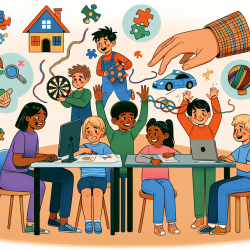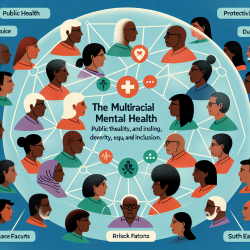Introduction
The Wisconsin Assessment of the Social and Built Environment (WASABE) provides a comprehensive tool for assessing neighborhood influences on health. This instrument, developed through rigorous research, offers valuable insights that can be leveraged to enhance the effectiveness of online therapy services, particularly for children. As practitioners in the field of speech-language pathology, understanding the environmental contexts of our clients can significantly inform and improve therapeutic outcomes.
Understanding WASABE
WASABE is an objective audit tool designed to measure a range of social and built environment features in both urban and rural communities. It has been proven to be highly reliable, with over 81% of its 115 derived items achieving a percent agreement above 95%. The tool captures variance in neighborhood features, which is crucial for understanding how different environments can impact health outcomes.
Implications for Practitioners
For practitioners providing online therapy services, integrating insights from WASABE can lead to more tailored and effective interventions. Here are some ways practitioners can utilize WASABE findings:
- Contextual Understanding: By understanding the neighborhood context of a child, therapists can better tailor their interventions to suit the child’s environmental realities. For instance, knowing the availability of parks or recreational facilities can inform recommendations for physical activities that support speech and language development.
- Data-Driven Decisions: WASABE provides data that can be used to make informed decisions about therapy approaches. For example, if a child lives in an area with limited social interaction opportunities, therapists might focus more on virtual group activities to enhance social skills.
- Policy and Advocacy: Understanding neighborhood effects can also empower therapists to advocate for changes in the community that could benefit their clients. This could involve working with local governments to improve access to facilities that support health and development.
Encouraging Further Research
While WASABE provides a robust framework for understanding neighborhood effects, there is still much to explore. Practitioners are encouraged to engage in further research to deepen their understanding of how environmental factors influence child development. This could involve collaborating with researchers to study specific aspects of the built environment or conducting longitudinal studies to assess the long-term impacts of neighborhood changes on therapy outcomes.
Conclusion
Integrating environmental assessments like WASABE into online therapy practices can enhance the effectiveness of interventions and lead to better outcomes for children. By leveraging data-driven insights and advocating for supportive environments, practitioners can play a crucial role in promoting health and development in the communities they serve.
To read the original research paper, please follow this link: The Wisconsin Assessment of the Social and Built Environment (WASABE): a multi-dimensional objective audit instrument for examining neighborhood effects on health.










